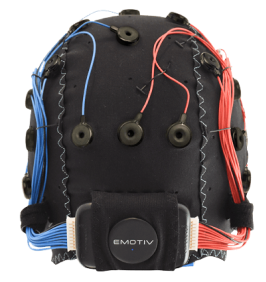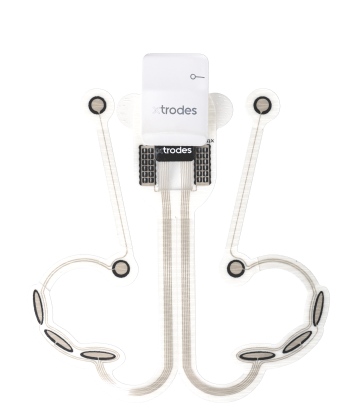Imagine you’re at the movies, totally absorbed in a scene, watching your favourite superhero demonstrate their superhuman capacity. Movies give us permission to engage in a fantasy or another world. Quite often, people are missing this in their own lives and they want to disengage from the real world; that’s why they go. Movies present possibilities we may not have even imagined: combining creativity, innovation and a story.
How often have you felt refreshed, inspired, or empowered after seeing a movie? So, why can’t our life experience be like our movie experience? Our lives can be bound by our past, and “if you carry the same bricks from the past, you will build the same house in the future.”
Imagine if you could suspend disbelief all the time and be the star of your own movie. You could be in your own action, adventure, or a comedy movie, where you can simply fix the challenges in your life and always know the right way forward.
Many of us have dreamed of having a superpower when we were children. Perhaps you dreamed of having superhuman strength: for example, Alain Robert, the “French Spiderman,” one of the best climbers on earth. Robert has climbed over 160 skyscrapers without ropes or a harness. Some of his feats include climbing Taipei 101 in Taiwan and the Lloyd’s building in London. If that was your specific wish, then your dream is now (partly) achievable.
Throughout history, we’ve seen many examples of superhuman capacity, and this is evolving into something we have never dreamed of before. Just like flight and motor cars for example, the possibilities for superhuman capacity are also unlimited.
“When your desires are strong enough you will appear to possess superhuman powers to achieve” Napoleon Hill
Reflect on the past, and consider the possibilities: you have the potential to be a part of this change!
Incredible Examples of Superhuman Capacity
According to the definition, a superhuman is someone who “exceeds normal human power, size, or capability.”
Just imagine how that would feel? Becoming superhuman is about giving 110% and pushing yourself even further in all aspects of your life.
Let’s look at amazing people with superhuman capacity:
- Superhuman strength. Angela Cavallo had more strength than she could ever imagine. Her son was performing mechanical work on his vehicle when the jack fell, trapping him underneath it. Angela shouted to her neighbor for help but decided to act on her own to save her son. She lifted up the vehicle, weighing approximately 3,500 pounds, high enough and long enough for her neighbor to replace the jack and pull her son to safety.
- The man who can withstand freezing temperatures. Using the Buddhist meditation technique Tummo, Dutch daredevil Wim Hof can keep his body temperature stable while enduring extremely cold conditions. Hof, whose feats have earned him the nickname The Iceman, has completed several marathons and climbed Mt. Kilimanjaro in sub-freezing temperatures wearing only shorts. Hof holds twenty cold-endurance world records: including at one hour, thirteen minutes and forty seconds, the record for the longest ice bath.
- World’s Strongest Child. At six months old, Liam Hoekstra could walk upright without assistance, including upstairs. By age one, he could do chin-ups. At 18 months, he could lift and move the furniture in his family home. Liam was born with an extremely rare condition called myostatin-related muscle hypertrophy, which increased muscle mass and reduced body fat. His muscle growth is uninhibited, which has led to him possessing six times the strength of children his age.
- The Man with Infinite Endurance. Dean Karnazes is an American ultramarathon runner whose body does not exhibit signs of physical exhaustion ever. He once ran for three hundred and fifty consecutive miles, foregoing sleep for three days straight. His latest achievement was running fifty marathons, in all fifty US States, in fifty consecutive days, ending with the New York Marathon, which he completed in three hours flat.
- Superhuman Memory. Stephen Wiltshire is a genius. He can draw entire cities from memory after seeing them only once. He once drew a nineteen-foot-long drawing of New York City after a single 20-minute helicopter ride.
Looking Back
According to his philosophy, German philosopher Friedrich Nietzsche showed us how we could all become superhuman. He outlined three metamorphoses that we must go through to become superhuman; through his characters; the camel, the lion, and the child:
- The camel becomes a carrier and represents the “strong” spirit and, unlike the herd animal, is happy to take on burdens and something greater than ourselves.
- The lion confronts the dragons in its life and roars with a “the sacred No”; rejecting all undesired values that came before the lion.
- The child is about “Innocence and forgetfulness, a new beginning, a game, a self-propelling wheel, a first motion, a sacred Yes.”
Nietzsche was one of the biggest precursors of existentialism, moving the focus of philosophy from metaphysics to the material world.
Albert Einstein was one of the greatest minds of our age, an intellectual descendant of science’s giants like Galileo Galilei, Isaac Newton, Johannes Kepler, and Stephen Hawking. Through thought experiments, Einstein created the special relativity theory, something he started thinking about at 16 years old. Einstein asked, what would happen if you chased a beam of light as it moved through space? He realized that light must always be moving away from him at the speed of light, laying the groundwork for his special theory of relativity.
“Genius: the superhuman in man.” – Victor Hugo
Potential for the Future
Stephen Hawking left us with bold predictions on AI, superhumans, and aliens:
“The humans who do escape Earth will probably be new “superhumans” who have used gene-editing technology like CRISPR to outpace others. They’ll do so by defying laws against genetic engineering, improving their memories, disease resistance, and life expectancy.”
“Once such superhumans appear, there will be significant problems with unimproved humans. This will lead to a race of self-designing beings improving themselves at an ever increasing rate. If the human race manages to redesign itself, it will probably spread out and colonise other planets and stars.”
Hawking was curiously enthusiastic about this final point, writing, “There is no time to wait for Darwinian evolution to make us more intelligent and better natured.”
Elon Musk’s BCI (brain-computer interface) start-up Neuralink aims to attract skilled staff and increase interest in BCIs to advance neurology and hardware. Musk co-founded Neuralink in 2016 and has promised that the technology “will enable someone with paralysis to use a smartphone with their mind faster than someone using thumbs.”
Also, emerging technologies are enhancing our basic senses, allowing us to achieve what some may have thought impossible. Examples of these technologies include 3D-printed corneas, cyborg ears to give superhuman hearing, and 3D-printed prosthetics.
Science Fiction to Reality
The advancements of these technologies are astounding in all aspects, but especially in interactivity, as they will significantly improve how we interact with the world and others. Artificial intelligence allows us to make new discoveries and breakthroughs into the digital realm. So much so that differentiating the virtual from the real has become difficult.
There is potential now to target the human brain for technical purposes. Because the human brain runs on electrical signals through neurons, companies like EMOTIV have demonstrated that the brain can directly control digital technology.
EMOTIV has developed technology for personal, research, and development applications. We have maintained an uncompromising approach to the design and development of our mobile EEG (electroencephalography) and we believe that spatial resolution — detecting activity across the main cortices of the brain — is crucial for obtaining high-quality brain data. The wealth of data we have accumulated and analyzed and our detection algorithms, we believe, are second to none.
The EMOTIV Neurogeneration has the potential to revolutionize how we learn, do business, and heal disease. You can be a part of this by participating in research opportunities that enhance our understanding of the brain.
Some people cannot use devices that need to be physically handled, for example, people in wheelchairs who have mobility impairments. They may be unable to use their hands and arms to operate a standard keyboard or mouse. For this reason, EMOTIV strives to empower the mind with tools to control digital technology directly. Such advancement was a debatable possibility in science fiction until today.
With our EEG headsets and machine learning algorithms, EMOTIV makes human-computer interaction possible through a BCI — technology that sends signals between the brain and an external device, allowing individuals to control the device with their brain waves.
EMOTIV Technology will Supercharge your Performance
As a user of EMOTIV’s headsets, you can contribute to the next generation of neuroscience with research activities that lead to new discoveries. By using EMOTIV’s wireless EEG headsets, you become a citizen scientist and gain a better understanding of your brain, and how it behaves, adapts, and learns.
With EMOTIV, you can gain a greater understanding of your stress levels and focus while you work. Helping to optimize your day and find your perfect flow.
EMOTIV is a recognized pioneer and market leader in the field of BCI enterprise solutions and EEG technology. Its award-winning EMOTIV EPOC+ headset and the 10-year anniversary edition EPOC X provide professional-grade BCI data for academic research and commercial use (EMOTIV EPOC X brain-computer interface).













